Expert Tactics for Content Marketers
Blogging Tips for Content MarketersScroll down to the table of contents and choose your own adventure -- you're more than welcome to read this guide start-to-finish, but this was created so you could bookmark it and use it as a resource, based on your needs over time.
As IMPACT’s Director of Web & Interactive Content, Liz does a lot more than wrangle commas. With more than 10 years of editorial and inbound marketing experience, she’s obsessed with helping businesses and industry leaders create addictive online content experiences. Additionally, she works closely with in-house contributors and IMPACT partners as an editor, content strategist, and sounding board, to help them bring their own stories to life.>
Fill out the form for a downloadable PDF version of the guide you can reference later.
I Need Help With
Look, there’s a big difference between drinking the content marketing Kool-aid and knowing you should be blogging and knowing what you should be blogging about as a business.
Unfortunately, I know first-hand how demoralizing it can feel to sit in front of your computer screen with the goal of writing… something profound and helpful, but not knowing what that something should be.
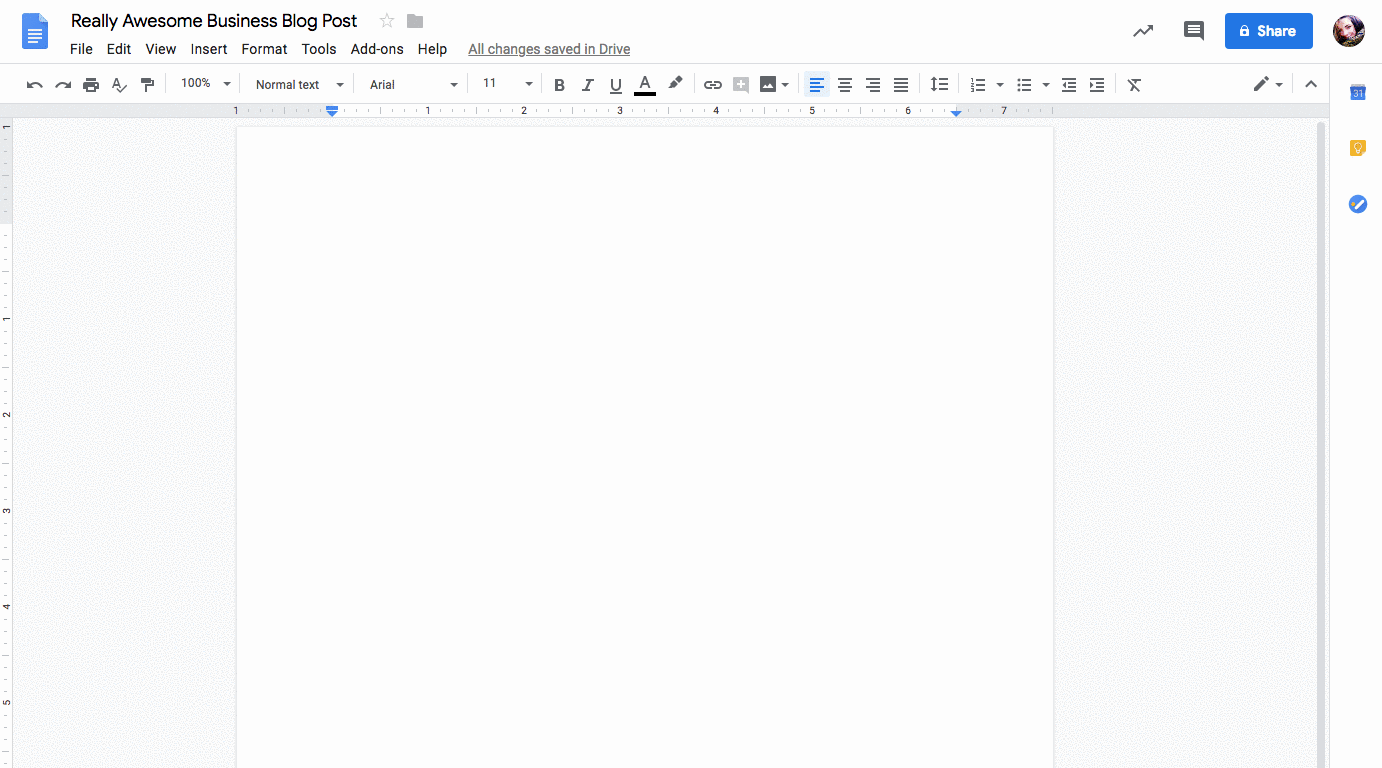
(You’d think that someone like me with “content” in their job title would be immune to this, but you’d be wrong.)
Overcoming this challenge comes down to changing your mindset of how you think about blog topics.
Instead of saying to yourself, “Our team needs to be writing blogs about different topics,” you should be saying, “X times a week, we’re going to write a blog post that answers a question our audience has.”
Because, really, that’s what blogging is all about. No matter what industry you’re in. No matter if you’re B2B, B2C, B2G, eCommerce, or a nonprofit.
If you’re committed to blogging as part of an inbound approach to growing your business, you’re now in the business of answering questions and becoming the most trusted educator in your space.
It’s a subtle shift in how you think about topics. But trust me when I say it’s much, much easier to brainstorm blog topic ideas that are really based on the questions you know you’re being asked by prospects and customers.
But what kinds of questions should you be answering?
In his book, They Ask, You Answer, Marcus Sheridan talks about the remarkable growth his company -- River Pools and Spas -- underwent, after they made a commitment to publish between four and five pieces of content a week on their website.
It wasn’t long before they not only saw an increase in organic traffic to their website, the River Pools team also experienced a dramatic increase in leads, which led to an uptick in sales.
Later on, once they institutionalized the active use of their educational content by sales reps in their sales process -- which is called “assignment selling” -- their closing rates went up-up-up! On top of that, they saved about 800 man-hours on the sales side per year.
(When you spend time going out of your way to educate your potential buyers, you’d be surprised how much less hand-holding you have to do!)
Being a highly-evolved inbound organization, they took a look back at the data to see which pieces of content were bringing home the traffic, leads, and sales bacon.
Lo and behold, they discovered there were five topics or categories of questions that made a bigger impact on their bottom line than any other type of content they were producing.
Pricing and cost
Problems
Versus and comparisons
Reviews
Best in class
Often these are the exact topics marketers want to steer clear of.
“We don’t want to talk about price! We don’t want to talk about problems!”
Right?
But think about what happens when you go home every day and become a consumer again. These are the categories of questions we obsessively research online, whenever we’re looking to make a purchase.
For example, just like IMPACT Content Marketing Consultant Kevin Phillips a few years back, I bought a car at the end of 2019.

When I got to the dealership, the only thing I didn’t know was the color of the Jeep Renegade I wanted to buy.
(Although I should have known I would pick orange -- it’s my favorite color.)
That’s because, before I showed up, I had researched the following:
How much Jeep Renegades cost (pricing and cost)
Problems with the Jeep Renegade (problems)
Comparisons to other similar SUVs and Jeeps (versus and comparisons)
Jeep Renegade reviews (reviews)
Best Jeep SUVs and, later on, best Jeep dealerships in my area (best in class)
As an aside, one of the “problems” listed in a “pros and cons” article I read about the Jeep Renegade is that some Jeep purists consider it to be too “cutesy” looking. To which I said, “Pfft, sign me up for the cute Jeep, please!”
Point being, if your goal with content is to answer the questions your potential buyers are searching for online, and you’re willfully choosing not to cover some topics because they make you uncomfortable as a marketer, you’re leaving money on the table.
I know you’re too smart for that, so let’s dig into each of the big five topics individually, so you can understand how to build out a large part of your editorial calendar.
Look, you shouldn’t talk about money over Thanksgiving dinner, but you have to talk about money in your content and on your website clearly and with specificity.
Again, going back to my Jeep Renegade buying experience, there is no chance in H-E-double-hockey-sticks I was going to set a single toe on the parking lot of that dealership without some idea in my head about how many dollars I was going to need to fork over.
I’m sure you can relate to that.
Think about the last time you tried to find the pricing for something -- anything -- online, and you couldn’t find any information on pricing whatsoever. Or, even worse, you encountered the ever-popular, “Contact us for a quote,” without even a ballpark figure of what you could expect.
Of course, there are very valid reasons why you may think you can’t write about pricing in your blogs.
Maybe there are a lot of variables that go into the pricing of what you sell. (Particularly if you’re in a service-based business or consulting field.) You might also be worried about tipping your hand to the competition about how much you charge for what you do.
Or, it might be as simple as you not wanting to scare potential customers away with a big ol’ price tag.
First, your would-be customers know your prices vary. It’s expected nowadays.
Second, we all basically have a good idea of what our competitors are charging, so who cares?
Finally, the more upfront you are about your pricing, the more likely you are to build trust with your audience. And trust is the currency the most successful inbound business deal in.
“How Much Does X Cost?”
“How to Justify the Cost of X to Your Boss”
“How to Justify the Cost of X to Your Spouse”
“Is X Cost Effective?”
“What ROI Can You Expect from Your X Investment?”
“Why Does X Cost So Much?"
"What Factors Influence the Cost of X?"
"How Much Is Too Much to Pay for X & Why?"
"How Little Is Too Little to Pay for X & Why?"
"Should You Ever Have to Pay for X?"
"X reasons Why Isn't Worth the Cost"
"X Reasons Why Y Is Worth the Cost"
“The X Hidden Costs of Y You Need to Know About”
“The X Unexpected Money Pits of Y”
“How to Reduce the Cost of X”
“How to Get the Best Price for X”
“How Much You Should Expect to Pay for X”
“How Much Should You Be Charging for X?”
Learn More:
Even though I was about to kiss my fuel efficient, 40-miles-to-the-gallon Prius goodbye, I was so excited about getting my new Jeep.
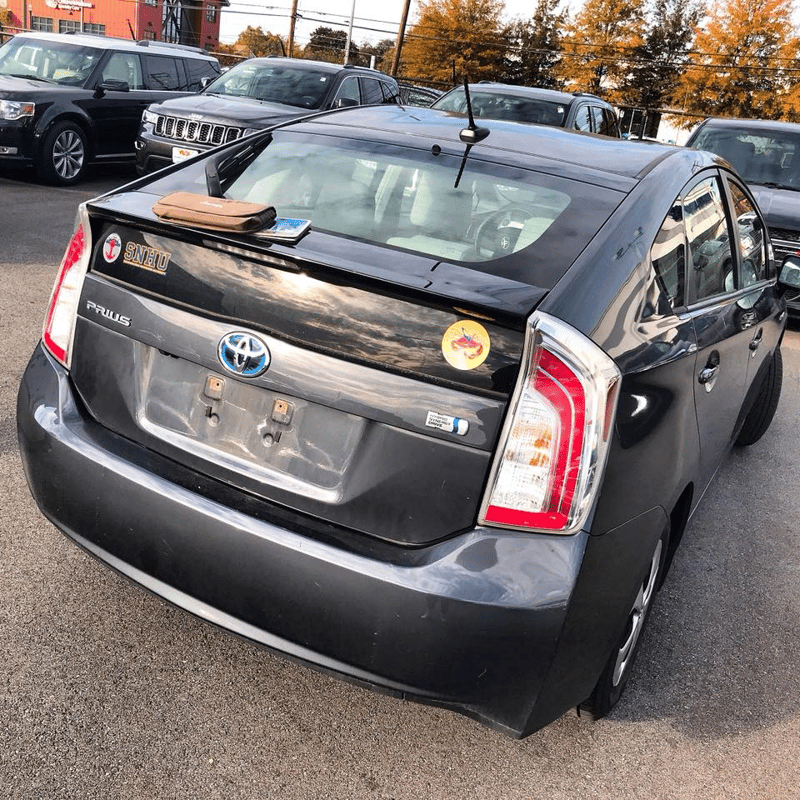
Wolfgang Prius of Destiny and I had a good run.
But one of the reasons I actively researched what others thought about it online was because I wanted to know if there were any problems with the car that I may not be aware of.
Because I was too focused on how adorable it was.
So, instead of going out of my way to find articles about why people loved the Jeep Renegade, I tried to uncover all of the bad reviews I could find.
I love surprise birthday parties. I do not love surprise flat tires or global defects car makers hope you don’t notice.
Again, whether you’re willing to admit or not, your buyers are also out there, trolling the internet, seeking out content that talks them out of the purchasing decision they want to make. Because, like me -- and, let’s be real, like you -- they don’t want to spend a bunch of money on something they later regret. Especially if the knowledge that could have saved them from wasting their cash was within reach online.
Now, I know what some of you might be thinking.
“I know people are searching for it, but I don’t want to turn people off by writing about what’s wrong with what we sell.”
I understand the fear, but if you don’t answer the question for your potential buyer, someone else will. Stand out by being honest. Help your buyers make an informed decision they won’t regret later.
Also, do you really think by not talking about those problems that your consumers won’t find out about them? If you answered yes to that question, you are kidding yourself. (I know that’s harsh, but I’m saying that because I care.)
So, let’s put on our adult pants and be brave together, OK? We can do this.
The most common (and/or unexpected) problems someone may experience if they're inexperienced, and how to avoid them.
"The Top X Problems with Y"
"The X Problems with Y You're Likely to Miss"
"Why Is X Not Working & What Can I Do About It?"
If you sell different services and products, provide candid overviews of the problems with each product type that someone might experience.
If you provide more B2B or consulting services where there is onboarding, write about the most common issues or problems a new client might experience in onboarding with a firm like yours. For example, "X Common Marketing Agency Onboarding Challenges & How to Avoid Them."
"The X Reasons Why Y Fails/Breaks/Etc.," which works for both products and service-based relationships.
"X Reasons Why Y Isn't the Right Choice for You"
Why you don't like something -- seriously, rant about it. Jessie-Lee did a great job with her rant about WIX, and it's an article that's been a traffic driver for years.
The top problems with the "best advice" everyone is always preaching in your industry offers up about a particular problem.
Aside from wanting to know how much my Jeep Renegade would cost me (approximately) and what problems (if any) were out there that I needed to know about, I also knew I would be stupid if I didn’t compare it to other cars.
Ultimately, the content I found ended up validating my original purchasing decision -- but there was no chance I wasn’t going to at least consider what else was out there on the market similar to what I was looking for.
But we see this kind of comparison content shopping across other industries and knowledge areas, too.
What’s interesting about this category of content is that, in some cases, you’ll be creating content that helps someone make a purchasing decision between two or more options. In other cases, you may be helping someone understand what the difference is between two very similar concepts, services, or products.
MQL vs SQL and UX vs UI are examples of more educational, high-level comparison content.
Comparisons of common platforms used within your industry.
Comparisons of different types of solutions to the same problem.
Compare different types of service providers in your space. For instance, an inbound agency, a web design agency, or an advertising agency can all build websites, but each type is the right choice for different client types and situations.
Compare new versions of products, platforms, services, tools, and applications to an older version -- it's almost like a review.
Yesterday vs. today #1, "What solutions worked X years/decades ago but don't work today? What changed?"
Yesterday vs. today #2, "What problems were problems X years/decades ago but aren't anymore? Why?"
Depending on the industry you’re in, you may or may not already have established authorities online that deal in reviews and “best of” lists or content about what you do or sell. For example, Yelp, much to the chagrin of many business owners, is a website that exists.
What you may not realize, however, is that you don’t need to wait for another website or organization to come along to review anything or dub something as “best in class.”
That’s another blog topic opportunity for you!
But before you go rushing off to create some sort of “best X service provider in the area” article -- with your business positioned in the #1 spot -- a word of caution.
You have to be 100% honest and transparent in any assessment, review, or “best of” list you create.
Again, the businesses that see measurable month-over-month, year-over-year revenue growth through inbound content are those that earn the trust of their audience through absurdly truthful content.
And if you’re creating a list of “best X providers” in your area, you need to leave yourself off of that list.
I know, it sounds crazy.
But here is what Marcus Sheridan had to say in his book about the positive results the River Pools team saw when they published Who Are the Best Pool Builders in Richmond, Virginia? (Reviews/Ratings):
“Let’s analyze why I wasn’t on the list. The first and obvious reason is that the moment I put myself on a best-of list of any kind, I lose all credibility … Furthermore, consider this: If someone starts reading that article, where are they? That’s right -- they’re already on my site. In other words, I don’t need to prove to them that I’m awesome.”
Additionally, even though Marcus didn’t put River Pools on the list, he established credibility and authority by opening his article by saying this:
“Each year, we at River Pools and Spas meet with well over 100 households in the Central Va/Richmond area with respect to their in-ground swimming pool installation. And because so many folks know our thoughts and feelings (from this website) on all things "pool construction," they often ask us who are some of the other builders and competitors we have in the area.
We're never ones to shy away from being blatantly honest with respect to competition, and we want our customers to be as informed as possible.
Here is a list of some of the companies that have a solid inground pool building history in the Richmond area.”
After reading that opener, how do you feel about River Pools? Do they sound trustworthy? Or maybe even experts who know a thing or two about swimming pools?
At IMPACT, we wrote an article about the best inbound marketing agencies around, and we didn’t put ourselves on our own list.
But here is how we opened that article:
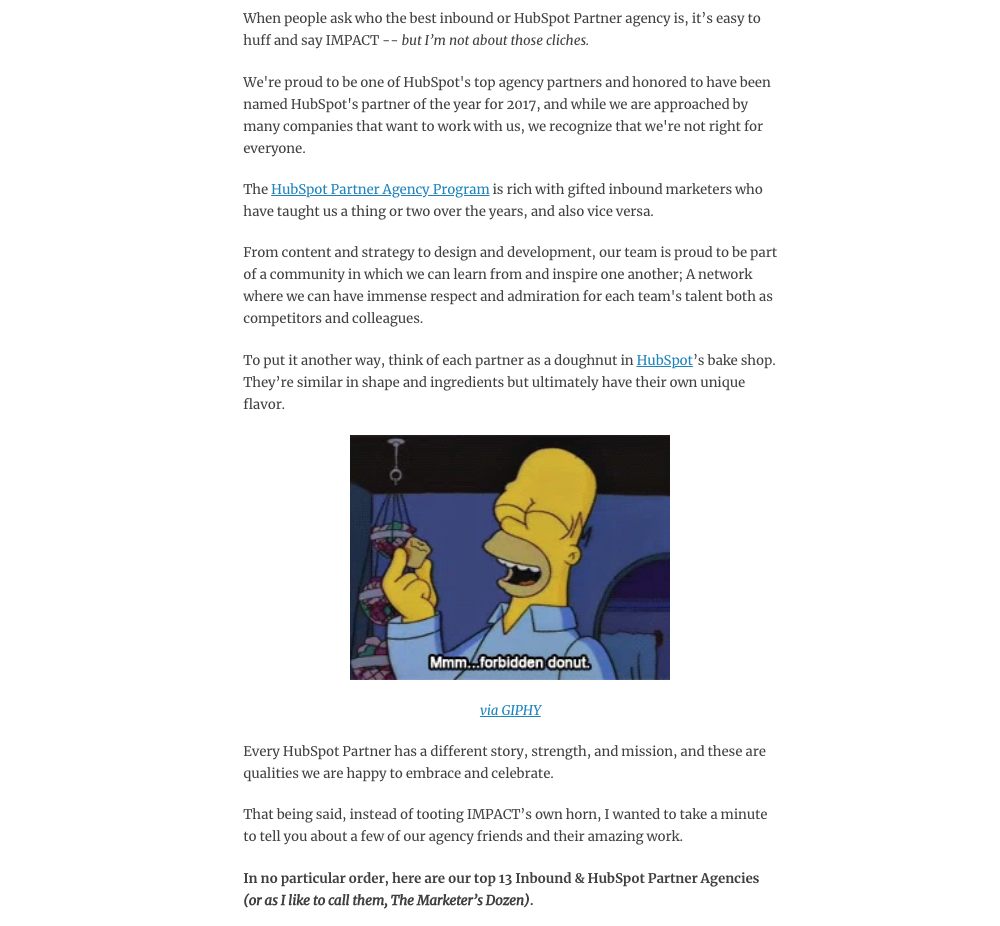
And if you search for “best inbound marketing agencies,” our article ranks #1 for that long-tail keyword:
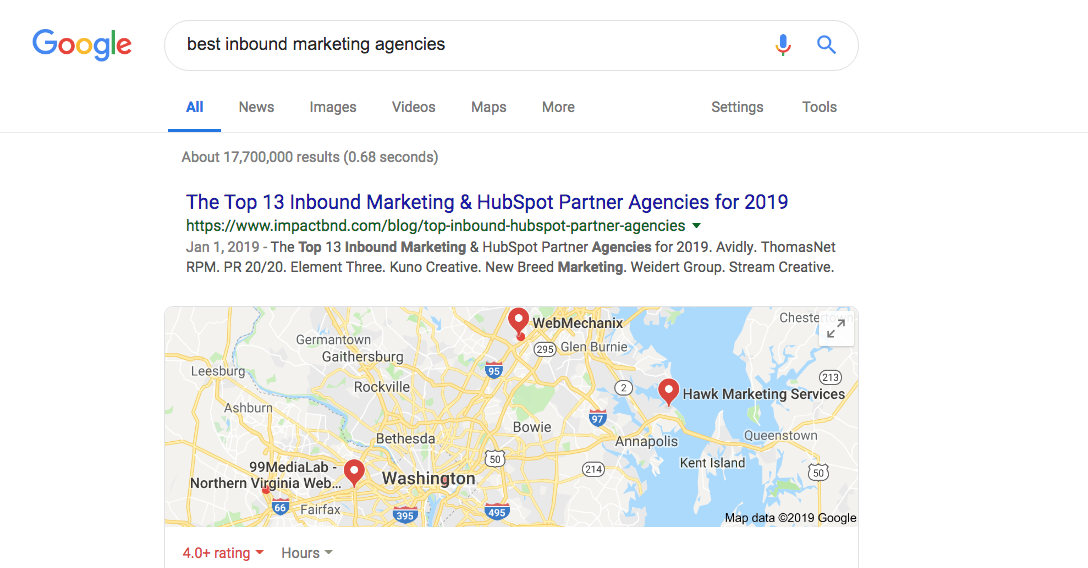
To be honest, reviews are reviews. Write them. Be honest. That’s pretty much all there is to it. But here are some creative prompts to help you make the most of your “best of” articles:
"The X Best [Your Company Type]"
“X Best Y in Z Location”
“X Best Types of Y”
“X Best Ys You May Not Have Thought Of”
“X Best Examples of Y & Why We Love Them”
Best tools to help someone do their job better.
Solutions to solve a particular problem.
Unexpected ways or strategies to solve a problem. This is a fun little variation on the previous suggestion, especially if you've discussed it in the past.
"Best X Products to Solve for Y" -- they don't have to be your products, or they could be related to someone's job, even if you don't necessarily provide those products.
"Best Y Products/Apps/Tools to Help You X" -- again, you don't always need to write about yourself here.
Best questions to ask a prospective vendor type and what answers to look for.
Best answers to provide in a particular situation -- interview, meeting, sales call, etc.
Best ways to produce better reports for your bosses, industry specific.
Best tips for being more productive, industry or job role-specific.
Why the "Big 5"?
If you’re new to inbound marketing, you need to hyper-focus your content creation efforts on getting some of the basic “Big 5” content created first.
Once you’ve done that, however -- or you’ve been creating content for a while already -- you can expand what you’re writing about.
Here are a few of our favorite categories.
"X Trends in Y That Need to Die"
"X Trends We Hope to See More of in Y"
"X Things Your Y Strategy Must Include"
“X Life-Changing Tools/Apps to Help You Y Better"
"X Predictions We're Making for Y”
"Is X Dead in 2019/2020?"
"X Mind-Blowing Y Statistics to Know for 2019/2020"
"X Statistics to Convince Your Boss of Y in 2019/2020"
"X Books/Podcasts You Need to Read Before 2019/2020"
"X Best Y Books/Podcasts of 2019/2020"
"X Apps You Must Download to Win in 2019/2020"
"X Surprises in 2018 & What They Tell Us About 2019/2020"
"X Must-Read Articles from Our 2018 Archives on Y" -- this is a multipurpose topic formula you can reuse for different subjects.
"X Most Important/Tough/Essential/Hard Lessons We've Learned About Y"
What's a major misconception about what you do or your line of work?
What's that thing people always get wrong when they're attempting to diagnose a common problem you can help them solve?
What's one thing someone could do better right now to immediately improve their own results or output that they never considered?
What are the worst solutions someone could consider for a particular problem?
What's the worst advice people are always giving about a specific problem, and what's better advice you'd recommend instead?
What questions shouldn't a team or business be asking themselves before they embark on a particular project type?
What are some super sexy sales promises a vendor should never offer you before they really get to know you and your business?
Has something big changed in your industry or with what you do? What are the "hot takes" about those big changes that are just the absolute worst?
"Why X Is Not a Good Choice/Solution for Y, No Matter What Anyone Says"
What we’ve presented here is by no means the definitive list of everything you could possibly write about. You know your industry better than anyone else, so use the guidance and examples we’ve presented here as a starting point to get you moving in the right direction.
If you’ve read all this, and you’re still concerned you’re not going to hit on the topics your potential buyers care about the most, go talk to your sales team.
Seriously, bring your sales folks into a room and have them tell you all of the questions they get asked by prospects.
Write down all of the questions they tell you they get in the words of the people who are doing the asking -- do not rewrite them for “clarity” or because you “know” what they’re really asking about.
Then, pat yourself on the back.
Congratulations -- in your hands, you have a list of blog topics you can start writing about now.
I Need Help With
Blog introductions can be intimidating. Very intimidating.
In a few short words, sentences, or paragraphs, you need to convey who, specifically, the article is for, what specific problem or question you’re going to be talking about, and why you are the author or entity best equipped to help them solve that problem or answer their question.
Not only that, for many of us, the introduction is the first place we encounter writer’s block. (Although in a later chapter, I’ll tell you how my tricks for getting around writer’s block.)
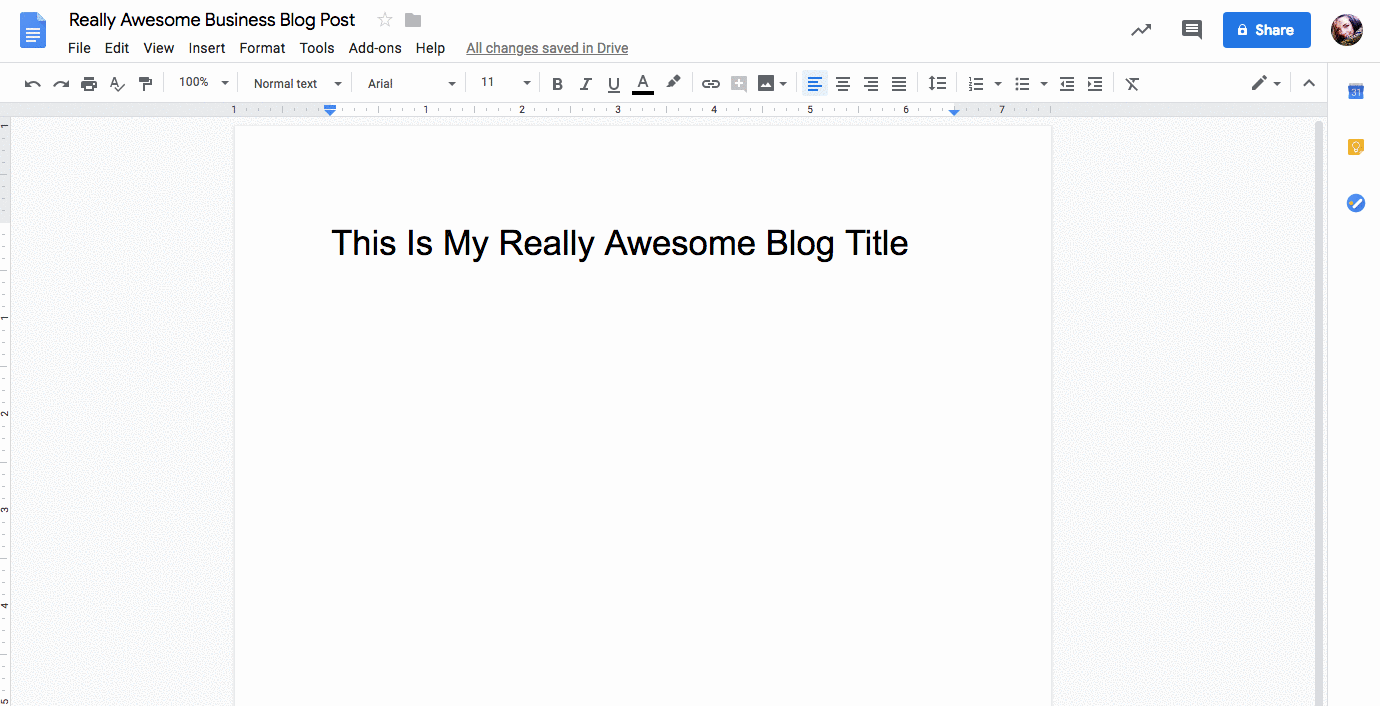
The good news is that there are six easy blog introduction formulas (that border on sorcery) you can follow:
A great way to create urgency, provide context for what you’re going to talk about, and -- depending on what you choose -- establish who your audience is, is to lead with a statistic.
For example, let’s say you’re writing an article about how content marketing works, with a target audience of folks who’ve heard about content marketing but still may not be sold on such a pivot in strategy for their own business.
You might write an introduction that looks something like this:
Here’s a mind-blowing fact -- 71% of today’s B2B buyers say they consume blog content during their buyer’s journey. That’s up from 66% in 2017.
This cuts to the heart of why so many businesses are embracing content marketing -- more consumers across all industries are doing more research online before they ever reach out to someone in sales.
They read blogs, watch videos on YouTube, and tune into podcasts to help them make purchasing decisions.
So, today, we’re going to dive more deeply into what caused this drastic change in buyer behavior and why content marketing works for businesses that are looking to grow their bottom line in this new era.
There are three essential elements of a data-driven introduction:
The statistic itself, along with a linked citation.
One or two statements that provide context, connecting the data point to the topic.
Finally, a lead-in to what you’re going to cover
If you’re a fan of introductions that get to the point, this may be the right solution for you.
However, this strategy for introductions only works if you have data that creates urgency or makes an immediate statement. If you need to spend an additional paragraph explaining what the statistic means before you get to the thesis of your blog, you’re going to lose your readers.
Another efficient way to get right into the meat of your blog article is to open up your article with a question. Using the same topic as above -- why content marketing works -- here’s an example of what that blog introduction formula looks like in practice:
Think about the last time you made a big purchase -- how much online research did you do before you pulled the trigger? What kinds of content did you review to help inform your decision? Reviews? Problems or challenges with whatever you were looking to buy? Even cost?
My last big purchase was a car. I read every review I could get my hands on, as well as independent write-ups on common problems with the make and model of car I was interested in.
Before the internet age, I would have gone directly to the dealership. Now, however, we -- as consumers -- have the expectation that we can find content online that will help us through the majority of our buyer’s journey before we even talk to someone.
This is the heart of content marketing and why it works.
So, today, we’re going to dive more deeply into what caused this drastic change in buyer behavior and why content marketing works for businesses that are looking to grow their bottom line in this new era.
There are three essential elements to a question-based introduction:
The question or series of questions.
Some sort of answer, whether it is drawn from personal experience or phrased rhetorically.
Finally, a lead-in to the meat and potatoes of your article.
Question-based introductions work really well, but you can’t rely on them all the time. And much like stat-based introductions, this style fails miserably when you rely on questions that are obvious lazy throwaways or require too much explanation.
This style of introduction is best explained by showing you an example. This time, however, the topic of the article is having challenging conversations at work:
Meet Jane. Jane has been staring into her coffee cup at her desk all morning, with her stomach in knots.
For the past month, she’s been leading a team of five people over the past three weeks to complete a project for their division VP. So far, everything has been going swimmingly -- except for Robert.
Robert has not been pulling his weight, leaving the rest of Jane’s team to pick up the slack.
Jane is a seasoned project manager, but she’s never had to deal with someone who so brazenly declines to be involved at the level they should be.
She knows she has to have a conversation with Robert. She knows she needs to be firm and clear, and her goal is not to start an argument, but rather to have him start participating as an active member of their team.
But Jane is stressed because she fears she may end up being too harsh -- or worse, too nice. Moreover, she doesn’t know the best way to frame the issue to Robert in a way that is productive. The worst case scenario is that she’s not able to resolve the issue on her own and that Robert won't want to change his behavior.
This situation is not unique to Jane.
These little one-act plays of stressed employees and team leaders silently hand-wringing over how to handle tough conversations occur hundreds of times a day across the country. (When you’re in the working world, having tough conversations comes with the territory.)
But what are the best strategies for navigating these types of conversations? And what are the most common mistakes people make when confronting a fellow employee or direct report with unacceptable behavior?
We’re going to answer those questions -- and more -- in this article.
Depending on your field, the questions you’re answering or the problems you’re solving in a blog article will -- at some point -- deal with feelings, fears, or sensitive, people-focused issues.
And since one of the most important things you need to accomplish in a blog introduction is that you not only identify who your article is for, but that you also communicate you understand precisely the pain or anxiety someone is experiencing, a statistic or a short question (or series of questions) may not cut it.
This is where introductions can be elevated to something akin to magic.
Hypothetical storytelling allows you, in great detail, to showcase that you know exactly who you’re talking to, what their problem is, and what answers or solutions they’re desperately seeking.
And you’re doing so without pointing the finger at them with “you”-focused language.
In theory, you could kick this off with a statistic -- but unless you’ve got a super compelling, show-stopping data point, it may not land with the same emotional power. (Of course, depending on the subject matter, you might; just use your best judgment.)
However, I have to warn you about this introduction formula -- for some audiences, it’s never the right choice.
So, you must be hyper-aware about the context of what you’re writing and who you’re talking to. If your audience considers talking about feelings fluffy and pointless and prefers people who get to the point, then do not write an introduction this way.
Again, this blog introduction formula addresses the challenge of those topics that are more emotional or have a high level of stress attached to them, from the perspective of your audience.
Similar to the “Stop Me If You’ve Heard This One Before…” formula, you’re going to be telling a story. But this time, you’re going to be speaking directly to the audience.
Using the tough conversations at work topic, here’s what I mean:
You’re all jokes and smiles over muffins in the breakroom with your colleagues, but on the inside, you’re dreading everything that’s about to happen.
Even though you’re an adult who knows that putting the tough stuff off only makes things worse, you have been outright avoiding having a conversation with someone you work with for days.
Maybe they’re a peer. Perhaps they’re a direct report.
It doesn’t matter who they are, because what if you don’t frame the discussion well? What if you offend them accidentally or say something you regret later because you’re frustrated? What if they turn the situation around and blame you instead? Wait, what if it really was you that created this mess? What if they don’t understand that you’re not personally attacking them? What if it’s weird afterward? What if they talk about you behind your back later?
What if? What if?
If this sounds familiar, you’re not alone.
Whether you’re about to deliver critical feedback about someone’s performance or you’re talking to someone about behavior that can’t continue, it’s totally normal to feel nervous or stressed. These conversations are not supposed to be fun or be something that you look forward to.
However, there are time-tested tactics for handling them that will make it more likely for you and the person you’re talking to feel as if the outcome was productive -- even if the conversation was still sensitive and challenging.
So, don’t panic. We’re here to help with a few of our favorite tips for managing tough conversations at work.
There are two reasons why this formula works so well:
First, before you even bother telling them how to fix their problem, you’re showing them you know what they’re going through on a deep, emotional level. While they may not consciously recognize it, it makes your potential buyer much more likely to trust what you’re saying and that you know what you’re talking about.
Second, you’re proving you’re an actual human. You’re reaching through the screen and saying, "Hey, I know exactly how you’re feeling because I’ve been there." While your potential buyers are spending more time trying to avoid humans while researching an upcoming purchase, they still crave a human-to-human connection that helps them trust you.
Of course, as with the previous formula, don’t bother with this strategy if it will be a turnoff with your audience. Furthermore, this really only works well if you’re tackling subject matter where you can create a little emotional agitation with the reader.
Now, if you’re really looking to foster a one-to-one connection with your reader on a topic that matters, you can forget telling a story that’s hypothetical or meant to illustrate what they’re going through. Instead, you may want to walk through introduction formula #5’s door -- sharing your own personal story on a topic.
Here’s an example from an article I wrote recently about taking the pain out of content editing.
Now, I know what you’re thinking -- “Liz, holy cannoli. That is a lot of introduction.”
You’re absolutely right. It is a lot. But again, it comes down to the context of the story that you’re telling and what point you’re trying to make.
In the case of this particular article, the problem I was trying to solve causes an acute pain that can lead to loneliness and, most importantly, inbound marketers feeling like absolutely no one really understands what they’re going through.
To illustrate that point, I told a story that was very personal to show the reader that I do understand exactly how they’re feeling and why. In fact, that story ended up being integral to the lessons I taught in that article because I was later able to say that the solutions I outlined actually worked.
And I know that, again, from my personal experience.
But in your case, your story may not need to be that long in order to have the same effect. It’s all about context. (Here’s an example of an article with a personal story introduction that’s much shorter.)
Now, before you go running off to try this introduction formula out for yourself, there is one critical rule of thumb you need to keep in mind:
Do not go overboard on detail.
You want to provide enough detail that brings people back to a moment in time right alongside you, but you also don’t want to write a novel. So, you can talk about the weather, the time of day, or maybe that you were drinking coffee, but you don’t need to tell people what you were wearing that day.
The key is to paint a vivid picture, not a 100-foot mural.
Maybe you’re not a storyteller, but you’ve got feelings, man. You’ve got opinions you are ready to share with the world.
This formula might be the ticket!
There is nothing wrong with opening up an article with a big, bold opinion or statement, controversial or otherwise. In fact, it can be a powerful and direct way to start a blog article. (Playing it safe is a great way to not stand out from your competitors.)
For instance, let’s say you came across a blog post on someone else’s website that you fundamentally disagree with. You respect the guy or gal who wrote it, but they’re way off with their ideas.
Lean into that way of thinking and use that internal response as a launchpad into what you want to talk about.
Here’s an example:
Recently, IMPACT Director of Web & Interactive Content Liz Murphy shared that one of the most powerful ways to open a blog article is with a personal story. She says that it humanizes brands who are trying to foster one-to-one connections with the buyers they're trying to reach.
I strongly disagree.
While Liz is right -- we should be in the business of fostering human connections with our potential buyers through content -- that is 100% the wrong way to go about it.
Now, I’m going to explain why this strategy doesn’t work and three different tactics you should try instead.
The only way to blow this introduction formula is by tap-dancing around your own opinions. If you’re going to go this route, you need to be forceful. Respectful, of course, but the whole point of this strategy is to demonstrate your conviction and authority around a topic.
I Need Help With
Once you get beyond your introduction, now it’s time to deliver on the promise you made in the introduction. No matter what kind of blog you’re writing -- general explainer, a “how to” process overview, pros and cons, etc. -- every article you write should be:
Actionable. You should either be explicitly giving your reader something to do or enable them to make some sort of decision.
Not boring. Look, I know if you’re in industries like insurance or outsourced IT, you may think your subject matter is boring. It doesn’t have to be.
Well written. You don’t have to be Hemingway, but if you’re a chronic English language abuser, you’re going to turn off your readers. Here are a few tools I swear by that can help you improve your writing.
Most of all, your article should be helpful. But what do helpful articles look like?
As we talked about in the first chapter, the businesses we see that drive revenue growth through content -- across every single type of industry -- do so because they understand that the foundation of their success is built on the trust they establish with their audience.
You establish trust through your content by going out of your way to be helpful. Helpful content is always:
Accurate
Thorough
Honest
Again, it doesn’t matter if you’re writing a comparison blog article between two types of IT service contracts or an explainer blog about why you need to have your water heater flushed once a year.
Those three descriptors should apply to everything that you write. Even if it’s uncomfortable.
Actually, especially if it's uncomfortable.
Sometimes that may mean being candid about times you’ve failed, or where your service or product isn’t the right choice for someone. But those are the moments where you build trust with an audience -- where you demonstrate that you have their best interests in mind, and you’re not just someone else out there trying to sell someone to help boost their own bottom line.
Plus, it’s not like they won’t find out later. Either by going to a more reliable and trustworthy source or by being let down by you later when they stumble upon a piece of information you didn’t tell them.
In no particular order, here are five ways to make sure every blog you produce is considered helpful by your readers.
“Well, how long should it be?”
This is the most common question I get from clients and IMPACTers when I work with them on a content assignment. There’s a lot of benchmark data out there that talks about content length performance, and even SEMrush’s content strategy tool can make a length recommendation.
But the first rule to creating absurdly helpful content is this -- put word count out of your mind completely. Don’t stress about it. Don’t think about it.
Instead, write until you’re done.
That’s it. Really.
I started using that trick with myself, because, in school, I would go into an assignment with the mindset of, “Ugh, I have to write 800 words on [INSERT AWFUL TOPIC HERE] -- how am I going to write so many words? That’s like… 799 too many.”
But when I would mentally put the word count out of my mind and instead just focused on the question in front of me that I was supposed to answer, I noticed I not only was less stressed or focused on writing enough words, I was creating better quality content, because that was my sole focus.
Now when I write, I rarely think too hard about word count. I may check to see where I clocked in once I hit publish on something, but so far I’ve never written anything that ended up being too short or too long from a substance standpoint.
This one is simple. When I say, “don’t be a politician,” I mean don’t answer their question or address a topic by doing either of these two things:
Answering a different question that you prefer answering.
Providing half answers or only answers that make you look good.
No one likes politicians. So, don't act like one.
If you’re writing a how-to article, don’t just tell them what they need to do and how; tell them why each step matters. Tell them why the process matters. If you’re giving a list of interview questions to ask someone, don’t just write out the question -- tell them why each question is important or was selected.
If you’re writing a comparison article -- for example, Law and Order original vs. Law and Order SVU -- don’t just explain that the original Law and Order is far superior from an acting, writing, and overall awesomeness perspective.
For each pro or con, explain why they’re better:
Why is the writing better?
Why is the acting better?

Why is Jack McCoy the greatest T.V. lawyer of all time? (Because he is.)
When it comes to list-based, how-to, and comparison articles that fail me, not telling me why is usually the problem.
So, get specific. Tell people why and provide context whenever you’re teaching them how to do something or explaining what they should think about two or more items you’re comparing.
I know this is an obvious one, but it’s so often overlooked that it’s worth mentioning.
Let’s say you’re writing an article that’s all about how to execute a particular process. For example, I recently published a long-form how-to guide on how to write a content style guide for your business.
While I had more than enough content ground to cover in just writing the process, I realized that, in order to be helpful, I had to take my pillar a step further by showing examples. Lots of them, since there are so many different interpretations.
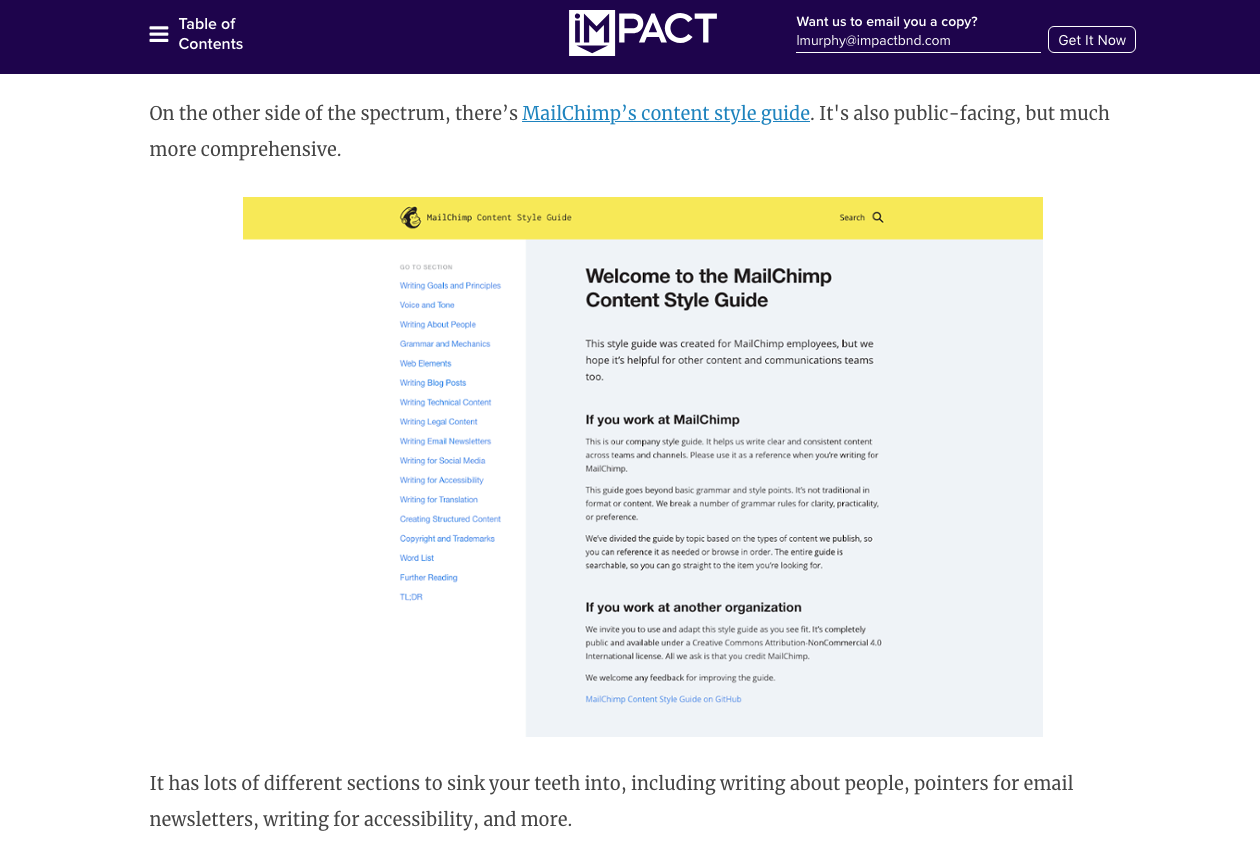
And I did it before I even got to the process.
Or, let’s say you’re writing up a handful of best practices -- like landing page best practices, to use a marketing example.
You could write up all of the best practices -- making sure, of course, to explain why each best practice is important -- and then you could include an example of a landing page that embodies a particular best practice for each one.
This is, hands down, one of the easiest ways to transform a piece of pretty good content to an amazing piece of content.
You’ll always look back on a piece of content and find ways to improve it, but that’s not a sign of failure.
Your litmus test for success should not be whether or not you can go back and make improvements later, but rather that you can answer yes to the following question:
“When I wrote this, did I genuinely try to be as helpful as possible?”
That’s all you need to do. Sit down with the mental posture of someone who wants to help others be successful -- who only wins when others win. You’ll be surprised at how much better and more helpful your content will be by simply flipping that switch in your mind.
I Need Help With
Before I can teach you the right way to write a blog conclusion, I first have to show you the three most common lazy ways some of you jokers try to wrap up your blog articles.
Don’t worry -- the first step is admitting you have a problem.
Wow, that was a real humdinger of a blog post, right? You must think I am a genius, and I bet you’re wondering what amazing thing I’m going to say next. Surely, I’m going to bring this all together and tie it off with a big red bow. OK, are you ready?
Now it’s your turn! You know it’s your turn because I’ve bolded this section to call attention it! Can you please answer this throwaway question that’s somewhat related to the topic in the comments? Or, if you don’t like that one, can you answer this question instead? I look forward to seeing the responses you have, even though I’m crying on the inside since I know no one will reply!
I hate, hate, hate blog conclusions like this, and there’s a good chance your audience does, too. It’s an obvious grab for attention, while you’re also trying to distract everyone from the fact that you literally had no idea how to end your blog article.
Most of the time, these questions are pointless and don’t lead to any sort of meaningful discussion. Also, comment sections may have been valuable in the past, but fewer and fewer publishers and businesses are enabling comments on their content at all.
Finally, think about what you want to happen as a result of your article. Is there a call-to-action you want someone to click? Probably! Why confuse your reader with multiple sets of instructions on something they need to do?

Nothing to see here, folks. You stopped writing after the last paragraph in the body of your blog. Basically, you mic dropped.
You’re not the last episode of The Sopranos, so don’t do this. I hope I don't have to explain too deeply why shouldn’t, but just in case…
This style of conclusion -- or lack thereof -- is lazy.
Granted, if you’re writing a process or how-to article, it might seem logical to just end it after the last step. Still, if you want to end your blog in a more helpful way -- and I know that you do -- you should include some closing remarks that bring it all together.
First, I’m going to reword the thesis from my introduction, but I might as well have copied and pasted it directly from the introduction. But I’ll keep it fresh by using a thesaurus. Next, I’ll reiterate the first point I made. After that, I’ll reiterate the second point. Finally, I’ll reiterate the third point. (This is like Cliff’s Notes for my article, in case you didn’t read it.) Anyway, don’t forget this stuff. Namaste.
Once again, this is lazy. It adds absolutely no value to your blog. It might as well not be there. I know, I know. This is how our middle school teachers taught us to write conclusions, but this doesn’t cut it. Your conclusion should motivate people to take action. Without further insight or context, you’re wasting space.
Whenever I am ready to write a blog conclusion, I use one simple process every single time. And it works every single time. I imagine that the person I’m writing to is sitting across from me. Then, I “wait” for them to ask me one of the following questions:
Your reader is saying:
"Why should I care about this? What you’re saying is logical and I get it, but so what? What does this mean for me? What’s the big deal? Why is this relevant to me or my business?”
Your reader is saying:
“OK, I smell what you’re stepping in. I’m totally with you, and what you’ve outlined here sounds great. But, realistically, I have zero time for any of this. The actions you’ve told me to take seem more applicable to someone who is running a business in a utopia -- free from deadlines and budget constraints. So, make the case to me. Why should I do this now? Why is this urgent? Are there any consequences to not taking any action? Can’t I just wait a little longer?”
Your reader is saying:
“Oh my god, where have you been all my life? These are the answers I have been looking for! There’s only one problem -- I don’t know what I’m supposed to do next. I’m excited, but there are a thousand ways I could possibly start implementing what you’ve proposed. What’s the first baby step I can take right now to start me moving in the right direction?”
When I’m ready to write my conclusion, I pick which of these three questions is the one a reader would most likely ask me, based on the context of what I have written.
Then, I write the answer. That’s it. Boom.
So, the three question process works like… 99.999% of the time. But there are those fringe cases where clients and IMPACTers are unsure of which question to pick to answer in their conclusion.
If you find yourself in a similar situation, consider this your parachute -- which you should only use when the above process fails. (It’s not a short-cut.)
Ask yourself:
If my reader has the attention span of a concussed goldfish, and they’ll only remember one big idea from this blog article, what should it be and why?
Again, your answer is your conclusion. Now, go forth and write fewer lazy conclusions. I believe in you.
I Need Help With
"Whoa, why are we just talking about the title? Doesn't that come first?"
Eh, sometimes? Usually, I save the titling of a blog article until the very end of the process. Until I see the full story in front of me, I often don't know how I want to title something I've written.
Anyway! Titling your blog articles is a bit of an art form. So, unfortunately, there is no single formula that will work every single time.
However, here are a few things you need to keep in mind:
Your Keyword Strategy
If you’re writing a blog article that’s designed to go after a specific target keyword, don’t mangle the title so much that the keyword isn’t prioritized, front and center. Also, don’t be afraid to go back and tweak your titles to boost performance. There is such a thing as over-optimizing, so be careful. Think with a people-first mentality. (We use an SEO experimentation tool called ClickFlow to run testing like that.)
When In Doubt, Use Their Language
If your topic is answering a buyer question, don’t reframe a title to something better -- even if it’s more accurate. Use their language, so they can immediately connect with the title and see relevance immediately.
Don’t Use Clickbait Titles
Look, sometimes clickbait works, but the reality is that we all hate them and joke about them. Also, most of the time, they fail to deliver on the bombastic promises they make. Be accurate and to the point. Don’t fluff up what you’re talking about.
Use Interesting Adjectives & Superlatives
I wouldn’t do this all the time, but a great way to craft an emotional hook with your title is to add a colorful qualifier or two. For example, the second section of this guide tells you how to write a “powerful” blog introduction. Not just any introduction -- a “powerful” one.
Don’t Be Wishy-Washy
Your blog title is no place for “maybes” and “mights.” Choose strong, authoritative words that create a sense of urgency like “must” “essential,” “absolutely,” “critical,” etc.
No matter what, your blog title should always be three things -- accurate, shareable, and focused on the benefits to the reader.
Here are a few examples:
I can’t tell you how many times I’ve read blog titles where you can totally tell someone thought it made them sound smart or used the right buzzwords.
Look, sometimes a little “air of mystery” can be just what the doctor ordered for your blog title. But those cases are the exception -- typically reserved for blog articles that are personal and a departure from the typical “Big 5” educational style -- not the rule.
So, if you create a title that sounds like a focus group of jargon-loving marketers sat in a room for an hour, picking apart each word until they emerged with a “pretty” sounding, nonspecific title they think sounds smart and/or will impress someone, trash it. Immediately.
Meaning, if your audience has to do any sort of substantive thinking to understand what your article is about from just the title, you need to take another run at it.
Again, leaving aside those exceptions, your blog titles should always be specific and clear.
Occasionally, that means you’re going to have to sacrifice your workshopped sexy title for the sake of clarity. You’ll get over it, though, when your blog articles actually get found online and read.
Bottom line, your blog article should never sound like a vaguely titled autobiography of a would-be presidential candidate that’s meant to hint at a nonspecific (but generally brighter) vision for tomorrow. So, don’t title it that way.
I Need Help With
Rest easy, ladies, gents, hamsters, and waterfowl. This section is going to be short because there isn’t a lot of smoke and mirrors when it comes to handling writer’s block.
Much of how you tackle writer’s block, however, will depend on when you’re experiencing writer’s block.
For example, if you’re struggling with a topic or knowing what to write about, your only step is to go to the first chapter of this guide and pick something from one of the 50+ title ideas I offered you.
If, on the other hand, you’re struggling to work through a blog article where you already have the topic, there are a few tips I can offer you.
While I hate to tarnish my unblemished reputation of being a content machine, I can tell you one of the most common reasons I end up in a writer’s block rut with a blog article is because I wait until the day-of to pick the topic.
I know, I know. I sound like a parent not telling you to procrastinate because you’re only hurting yourself -- but in this case, mom and dad were right.
The good news is that if you’re one of those poor souls without a content calendar that’s built out in advance -- tsk, tsk -- I’m not asking you to do much.
All I’m asking you to do is pick a blog topic at least 24 hours in advance. That’s it.
Obviously, more than 24 hours would be ideal, with some outlining thrown in for good measure.
But, if we’re being honest, many of you put off blogging until the last minute and end up stressing so much about having to deliver against a self-inflicted tight deadline. So, we’re just going to deal with it honestly.
Here’s the beauty of this little trick though.
Your inclination when avoiding blogging is to not think about it at all -- you’ll pick the topic and get down to writing all in the same day, right?
If you just pick the title -- and if you’re anything like me -- your brain will passively process and consider the topic. Much like a little computer running an algorithm (or something else accurately computer-y) in the background.
By the time you sit down to write 24+ hours later, you’ll find it much easier to get started, because you’ve spent more than a day subconsciously planning at least some parts of your blog.
There’s a good chance I came up with this little trick because I am still mad at my eighth grade English teacher for making me do comprehensive outlines before I was ever allowed to write a full essay.
As an adult, I (intellectually) understand the importance of outlining. But, being the stubborn forever only child that I am, I can’t bring myself to totally succumb to the dark side of creating full outlines.
So, I invented the content roadmap. This is what it looks like:
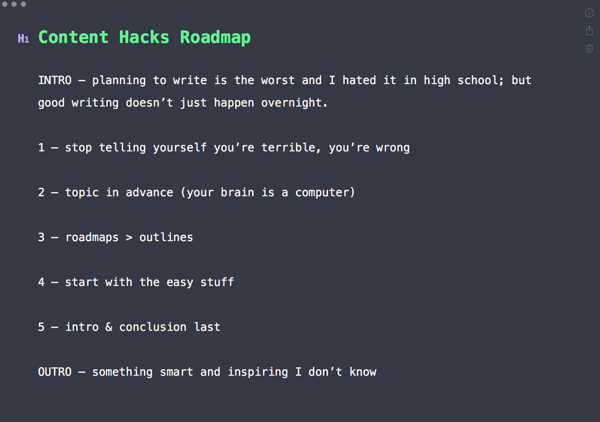
I’ve talked about this blogging hack before, but it's worth talking about again.
To create my roadmap, I take a minute -- maybe 90 seconds, at most -- and plot out the general beats of an article with a single rough idea for each section. This helps me avoid a couple of things.
Hm, this section is going to be longer than previously anticipated. Whatever, I’m on a roll!
Another perk of the content roadmap method is that you can pick and choose where you want to start. The reason I mention this is that the biggest lie you were ever told about writing is that you need to write each paragraph or section in chronological order.
For some of you, that may make the most sense.
For many of you, though, you need to understand that there are no rules about what you do to bring your blog article together. There is no blogging equivalent of Zeus in some cloud with a lightning bolt, murmuring to himself:
“Just try to skip over that section and write your blog article out of order… I dare you.” ⚡️
So, when I start writing, I look at my roadmap and begin with the section where the words feel like they’ll come easiest first. If I ever get to a point where I feel stuck, I’ll put in some placeholder text with the general thought that needs to go in that place.
Then. I. Move. On. I’ll come back to it later... like so:
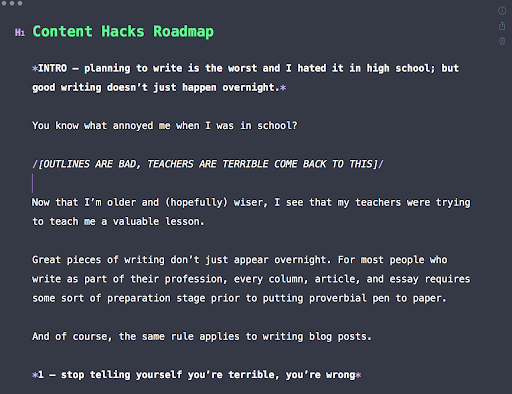
There is an insidious myth in the content marketing world that you’re supposed to get everything right on the first try. Meaning, your first draft should be remarkable. You should get to the end of the last sentence and require little more than a passing proofread before hitting publish.
No. No, no, no.
Oh my god, if that were the expectation, I would not be employed.
Yes, there are some people who are content wizards, from whom perfectly chosen words and soundly formed ideas splash onto their computer screen with little to no effort.
But those people are not representative of the typical writing population.
So, if you’re really struggling to get the ideas out in the correct order and the right words, try this -- focus only on getting your ideas out of your brain and in the correct(ish) order in the first draft. Think nothing of spelling or grammar or syntax.
Just get the ideas out of your brain.
Once you feel you have all the pieces of your story on your virtual paper, take a 30-minute break. Then, sit back down and start shaping the raw materials of your blog article into your masterpiece.
That way, you’re not trying to ideate and showcase the linguistic fortitude of Chaucer at the same time.
The day I discovered Noisli -- the free ambient noise soundboard -- my life changed, and I’m not exaggerating.
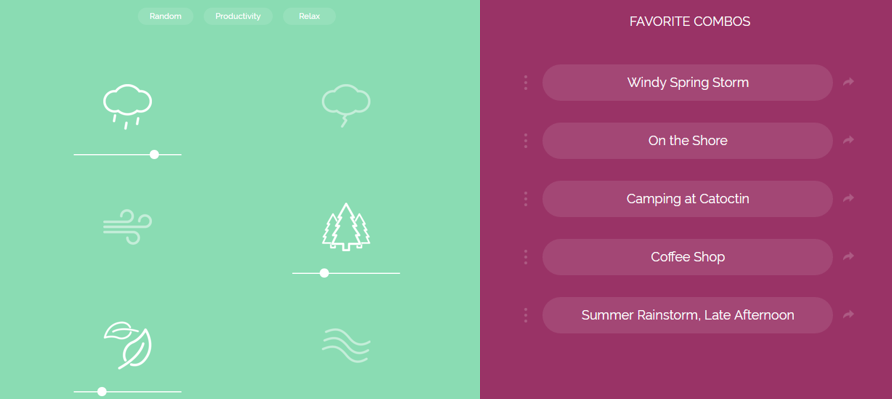
I can’t work in absolute silence. (I have tinnitus.)
But I also can’t work with music. The lyrics distract me. Or, if I listen to my beloved classical (I’m an opera nerd), I get distracted by shifts in my own mood or unexpected changes in tempo or tone between arias, concertos or pieces.
Seriously, I love Mozart’s Don Giovanni. It’s my favorite opera of all time. But that first note of the overture -- one of the most exceptional musical compositions in existence -- makes me fall out of my chair without fail. Every single time -- even when I’m expecting it!
I digress.
Ambient noise, on the other hand, is perfect. It’s relaxing. It fills the background. It helps me focus. And when I’m one of those goobers camped out at a coffee shop to get some work done, it helps me drown out the noise of the gaggle of preteens next to me, sipping on vanilla bean frappes.
Noisli is also available as a free Chrome extension. You don’t have to create a login to use it, but creating a login allows you to save custom blends of sounds.
OK, now it’s time for tough love. But, once more with feeling, only because I care.
I love you all dearly. We’ve come so far together in this guide, and I know how wonderful and eager you are to be blogging rockstars.
However, some of you out there like to throw your hands up in defeat any time writing feels a little hard. As if having to sit and think to find the right words means you’re in a rut you can’t pull yourself out of.
Blogging and creating content requires effort. And thinking. And hard work.
I will say that writing does get a lot easier with time and practice.
“But Liz, writing is your job. Of course, it’s easier for you.”
Look, this content nerd was a consistent C student (at best) in English class for most of middle school and high school. I was not born this way. I fell into this passion of mine by accident. And even now, on my best days, I’ll have a point where I stare at my screen, mentally willing the perfect words to appear on my screen without me having to try too hard.
I Need Help With
So, I lied to you in the last section when I said it would be short. This one will actually be fairly succinct. I think. Well, let’s just see how this goes.
Here’s the deal, folks. No one wants to read this:

I don’t care if that wall of text contains a buried treasure map. I am not reading it. And no one else is either -- no matter how compelling your title is.
So, here’s what you do:
Use headings and subheadings to help your reader skim and move through your article easily.
Bulleted lists are also a great way to break up the endless march of paragraph after paragraph.
Include relevant images and visuals to spice up your blog and make it more visually exciting. (But don't choose awful images.)
Bold or emphasize key words and phrases to draw attention to important ideas or important narrative shifts to retain the interest of a reader who may be drifting.
Obviously, you shouldn’t go overboard with any of these techniques. For instance, if you bold everything for emphasis, nothing will really be emphasized. Your blog will just be… really bold.
The goal is to make your blog article easy to move through visually, while also allowing those who like to skim before they commit to fully reading an article to quickly determine if your content will answer their question.
Bonus!
I thought about ending this guide with some sort of motivational call-to-action, but really, there’s just one last thing on my mind as I write this.
That "one thing" is one thing you should never, ever do. Otherwise, all of the hard work you put into writing a super helpful blog article will be completely undone.
Do not, under any circumstances, skip editing your content.
Sometimes, a rogue typo will slip through the cracks -- it happens to the best of us. But if you consistently create content where it’s clear you were just rushing to hit publish, without any sort of accuracy in the spelling, grammar, or syntax departments, you’re going to erode credibility with your readers.
(Nothing says detail-oriented like always confusing “you’re” and “your,” right?)
So, that is my final message to you, my friends. Sometimes it feels so good to get to the end of writing that it may be tempting to take a piece of content live immediately. I know this from personal experience.
Resist that urge. Take a few extra minutes to proof your work. Or, if editing isn’t your strong suit, use a free tool like Grammarly or Hemingway.
And with that, happy blogging, friends!
We respond to requests immediately, so we’ll get back to you super fast to set up a time to chat.
Talk to us